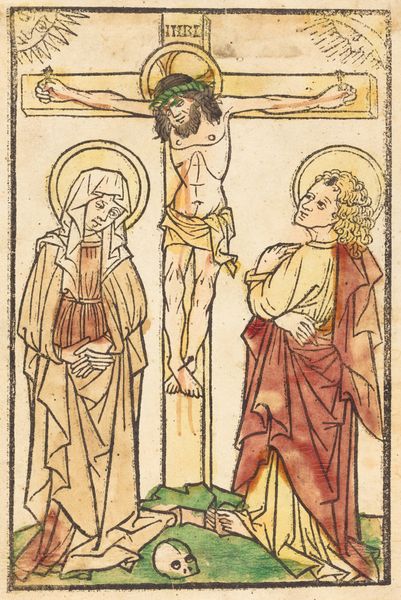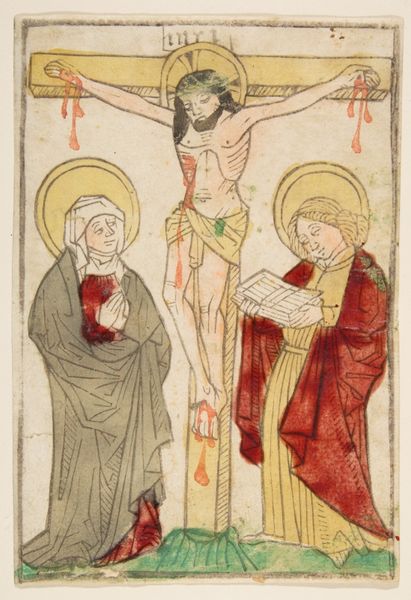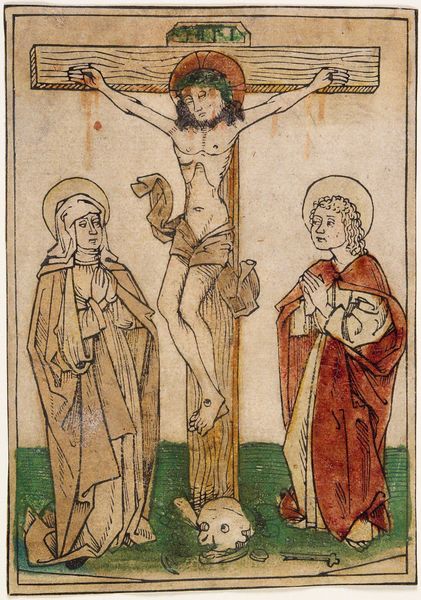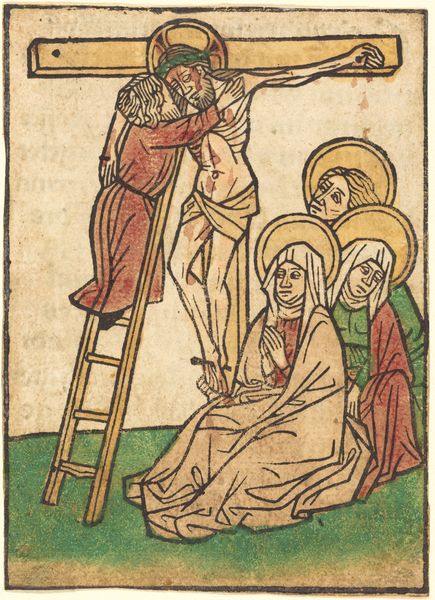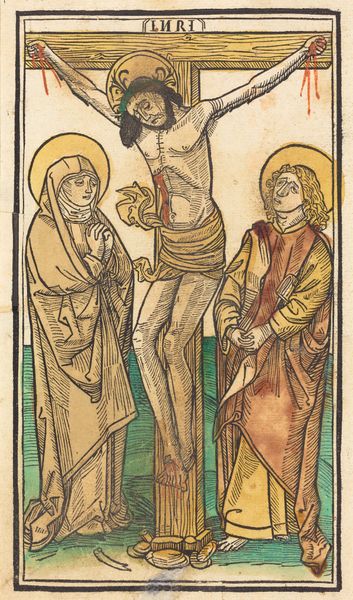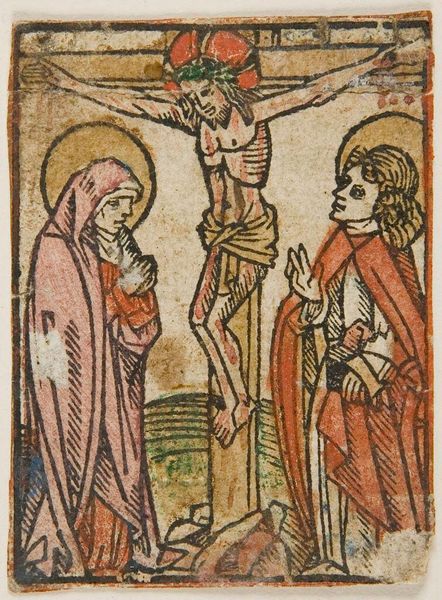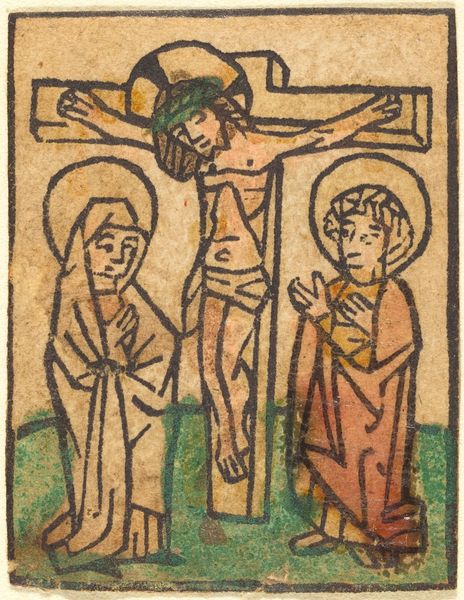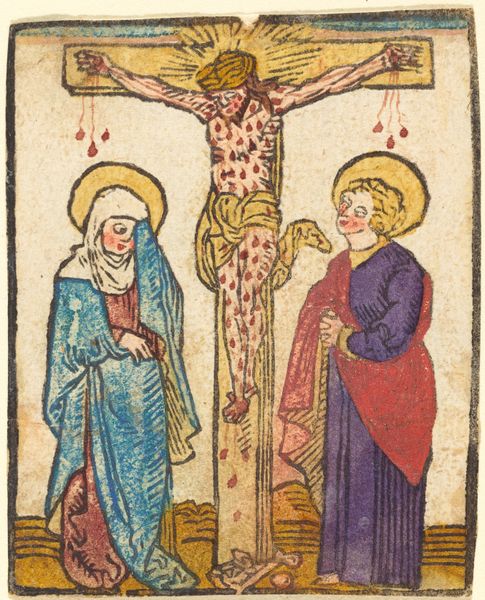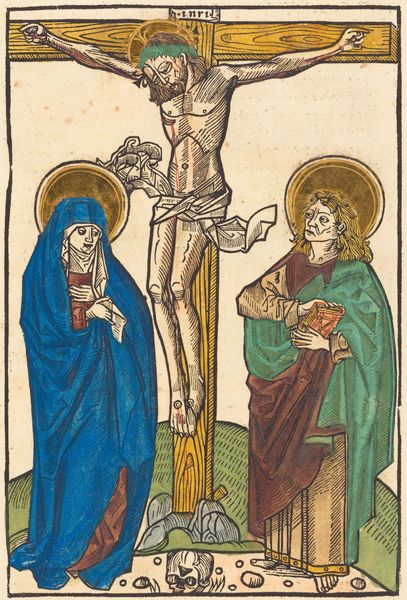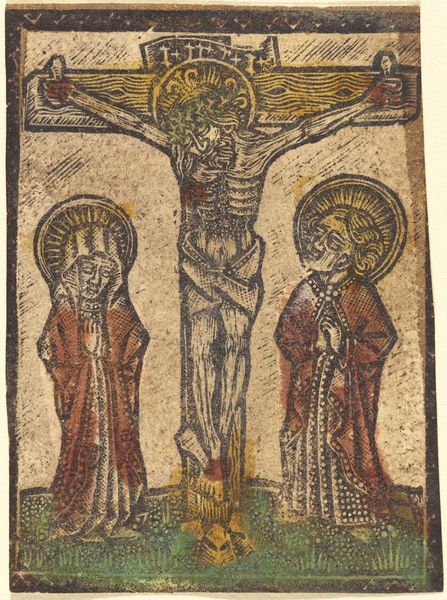
coloured-pencil, tempera, print, paper
#
coloured-pencil
#
medieval
#
tempera
# print
#
figuration
#
paper
#
coloured pencil
#
history-painting
Copyright: National Gallery of Art: CC0 1.0
Curator: Looking at this image, I'm struck by the somber atmosphere. The gaunt figure of Christ hangs on the cross, flanked by Mary and another figure engrossed in a book – John the Evangelist, perhaps? There's a real weight of sorrow conveyed through the muted colors. Editor: Precisely. What we're viewing here is "Christ on the Cross," a print created with tempera and coloured pencil on paper before 1470 by an anonymous artist. Think about the socio-political landscape of the late medieval period, and how the church used art to communicate with a largely illiterate populace. Curator: Absolutely. The pathos is certainly heightened by that function. The positioning of the figures creates an emotional triangle of suffering and contemplation. Mary's gestures seem so full of anguish. How would you interpret the seemingly disengaged figure of John? Is that supposed to read as stoicism? Editor: I think it signifies something deeper about knowledge and faith. Remember the function of religious imagery in medieval times: the intention was not just aesthetic but pedagogical. John reads, linking intellect and belief, while Mary embodies pure emotion. Consider, too, the absence of other expected figures at the Crucifixion. What political or social circumstances influenced this particular depiction? Curator: Interesting point. And the stylized blood droplets, and even Christ's slightly emaciated form, act as potent visual cues, reinforcing the narrative. In the 21st century, it also provokes complex reflections on power, suffering, and representation. How might contemporary queer or feminist theory engage with an image so central to Western culture, yet often wielded to justify oppression? Editor: The way the work reframes a biblical narrative highlights some of its important themes. The work is one window onto medieval life and its systems of belief. We can see these figures not merely as religious icons but as complex subjects shaped by, and in turn shaping, the cultural and institutional realities of their era. Curator: Yes, and it compels us to critically engage with its ongoing relevance – or lack thereof. It challenges us to ask, What does an image like this mean now, and whom does it serve? Editor: Indeed. Hopefully, viewers will appreciate the complexities of its history as well.
Comments
No comments
Be the first to comment and join the conversation on the ultimate creative platform.
